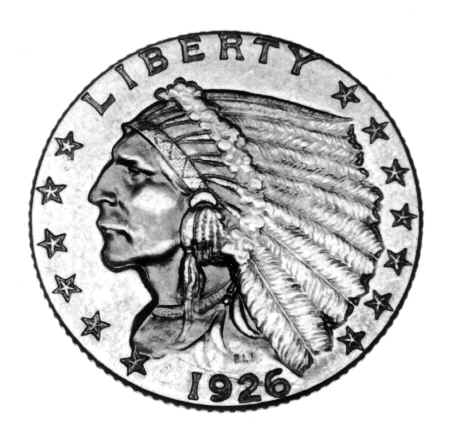

The Negative Gold Piece
The last gasp of the past
When William McKinley was reelected to the presidency in 1900, the US was looking forward to a new century of progress.
Roosevelt approached the famous sculptor Bela Pratt. Would he consider designing new gold coins for the United States?
 The Chicago Auto show in 1907--the nation was on the move |
A Triumph of the modern age Pratt leapt at the chance. Apparently he had been thinking the same thoughts as Roosevelt about the nation's gold coins, and the two men got along famously from the start. In response to Roosevelt's plea, Pratt not only designed a completely different gold piece---he created coins unique in the history of American coinage. Instead of raising the design off the surface of the coin, he depressed it into the surface---creating what is known as an incuse design. Such coins really are quite spectacular---almost optical illusions, because when you look at the coin it looks a bit like a photographic negative. |
| But what a design! Most collectors will agree that Pratt's
Indian on the obverse of the coin, with its full headdress and brave profile, is one of
the most spectacular coin images in history---and the strong eagle on the reverse of the
coin is poised to take flight---just like the United States leaping into the twentieth
century. The most radical coin design in history When the designs for Pratt's new gold pieces were presented to the Mint, the managers balked---they were still locked into their traditional thinking. They claimed the public would never accept such a radically different coin. Roosevelt persisted, and finally the Mint did strike the new design. Treasury official counting paper money, 1907--even though paper money was widely used, folks still carried gold pieces in their pockets (photo---National Archives) |
|
 The obverse of the Negative Gold Piece |
 The reverse of the Negative Gold Piece |
Indeed, when the new Indians were released, a rumor was spread that the incuse design on the coin would capture germs and spread disease! Of course, this was nonsense, and the public paid no attention to it---they fell in love with the new incuse gold Indians.
 Les Desmoiselles D'Avingon---Pablo Picasso, 1907 |
Pratt's negative gold pieces continued to be produced all
through the teens and twenties---and, in fact, Pratt's Indians were the last designs of
their denominations ever struck for circulation by the US Mint. Collectors still praise the radical design of Pratt's gold piece---but they may not know of Roosevelt and Pratt's struggle to get it produced. Simply as an important work of art, the $2 1/2 dollar Indian coin should be accumulated by serious collectors---but--it's also one of the best buys in today's coin market!
|
© 1998 CollectSource